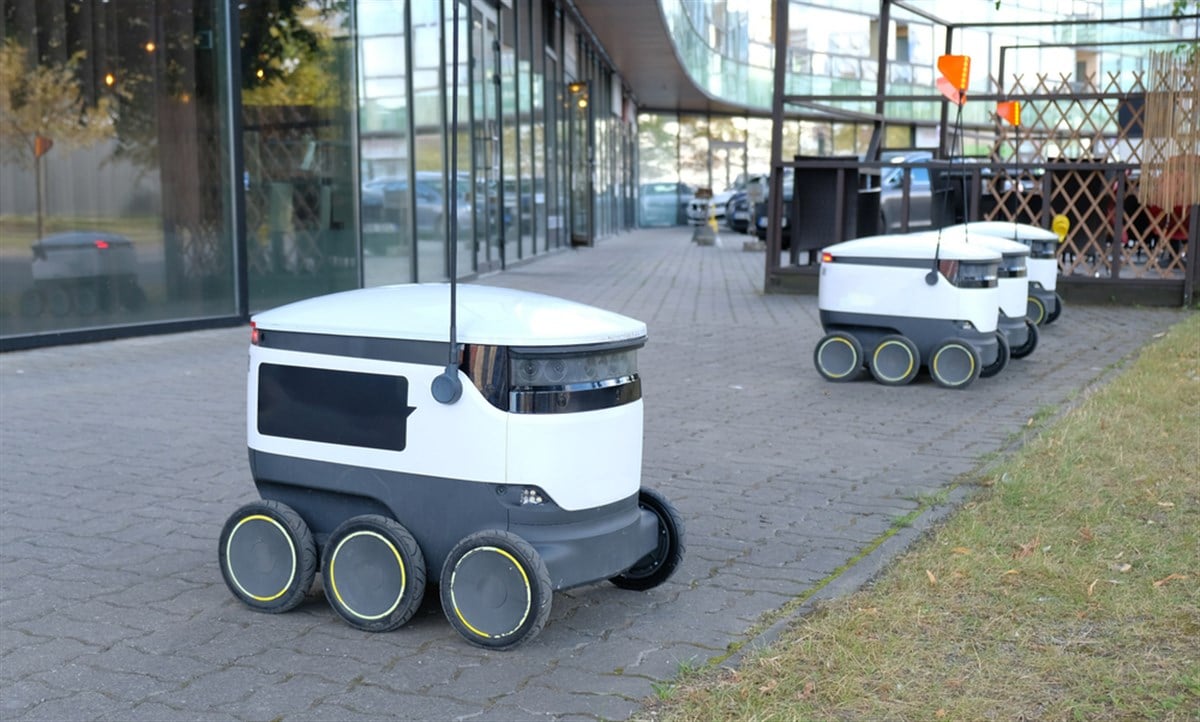
Since becoming a publicly traded stock in April 2024, shares of food deliver robot maker Serve (NASDAQ: SERV) have gone on a wild ride. Shares fell gradually for several months after going public. Then, in a matter of two weeks, they rose by 630% after NVIDIA (NASDAQ: NVDA) disclosed an investment in the firm. Since the end of July, the share price has approximately lost half of its value. An investment from one of the largest tech companies in the world understandably got the market excited.
However, one shouldn’t overstate the meaning of an investment in a tiny firm like Serve. Before the disclosure of the NVIDIA investment, the company was worth less than $100 million. Investing in Serve is a drop in the bucket for NVIDIA; it doesn’t hurt them much if Serve fails. Their investment is a big positive, but does it really justify the company being worth four times more now than it was before the disclosure?
Serve: Working to Revolutionize Food Delivery
Serve focuses on making robots for what it calls “last-mile delivery” in cities. The company has completed over 50,000 food deliveries in Los Angeles. The company now has an agreement with Uber (NYSE: UBER), the company it was spun out of, to provide 2,000 robots for the Uber Eats delivery service. The company expects the robots to deploy in Los Angeles in 2025, deploying 250 of them by the end of Q1.
The company said this, however, would be dependent on an influx of capital, which it received in Q2. The firm received an additional $35 million to fund its operations and had around $29 million in cash on its balance sheet as of Jun. 30. That is approximately enough cash to operate for a year and a half based on the last twelve months' cash from operations loss of $19 million. The company also gained an additional $20 million in gross proceeds since its last financial results.
Serve’s Core Business Does Bring a Lot to The Table So Far
Through the first six months of 2024, Serve has brought in $1.4 million in revenue. That’s a small number, but it’s much more than the $100K for the same 2023 period. However, 81% of this revenue came from licensing out its software to other firms. The company generated just $268K directly from its robots, which generate revenue from delivery fees and from advertisements on the robots. With just 44 active daily robots, each one is generating approximately $12,000 per year.
Assuming no changes to the amount of revenue each robot brings in, the additional 2,000 robots from the Uber deal would bring the company’s delivery revenue to around $25 million a year once fully implemented. This might happen in 2026; however, the company is clearly expecting a much larger amount of revenue at some point. The firm’s CEO believes that the annual run rate, or projected annual revenue, of the project will be between $60 million - $80 million once fully implemented.
Breaking Down Serve’s Estimates and Valuation
The average analyst forecasts $60 million in total revenue in 2026. This feels like a somewhat conservative estimate, given the higher projections from management and the lower projections based on what the robots are producing now. Using that number would put the company’s two-year forward price-to-sales ratio at around 7x based on its current $412 million valuation. Looking at other small companies in the robotics industry, that’s comparatively high. The ratio looks much worse the closer we move to the present day. The firm’s last twelve months' price-to-sales ratio is 270x.
This doesn't at all consider the profit side of the equation. The company has achieved rapid improvements in gross profit margins in 2024. Cost of revenue has dropped while revenues have increased by nearly 14 times.
However, R&D costs have tripled since 2023. This nearly doubled the company's loss from operations. However, R&D spending isn’t a negative if it results in higher revenue and/or lower costs over time. This is what the company is hoping to achieve with its new and improved third- generation robot, which will be the one it uses in the Uber agreement.
Overall, the company’s shares need to decrease significantly before I consider an investment. The core business of the company still barely produces revenue, and there is considerable uncertainty around what kinds of challenges it will face in increasing its delivery robot fleet by over 41 times from the current level. It will also likely have to further dilute shareholders to fund its money losing operation.













